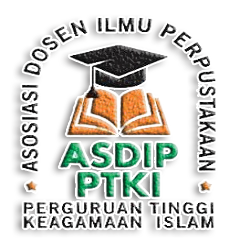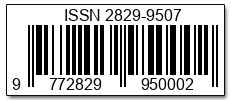Tren Kata Kunci Artikel Anuva: Jurnal Kajian Budaya, Perpustakaan dan Informasi
Abstract
In a scientific work such as a journal article, the writing of keywords is an essential part of a scholarly publication. They are usually used to represent concepts or ideas in the writing. By using keywords, authors can reach a wider readership, and the information needed matches the readers' desires. The study of keyword trends in the Anuva journal aims to map the keywords in the articles, enabling more specific information retrieval. This research employs a qualitative descriptive analysis of data downloaded from the Anuva website (https://ejournal2.undip.ac.id/index.php/Anuva/), then processed using Microsoft Excel, and the data is displayed in tabular form and analyzed to produce conclusions that can generally be narrated in tables. The data used in the research spans from 2017 to 2022. The results show that Anuva has published 227 articles from 2017 to 2022. The highest number of articles was published in 2021, with 54 articles, and the lowest was in 2017, with 174 articles, with a total of 839 keywords. The most frequently used keywords are "Library" (15), "Information Literacy" (11), "Information Seeking Behavior" (5), and "Library and Information Science Research" (3). This indicates that Anuva: Journal of Cultural Studies, Library and Information publishes more articles in the library and information field than cultural studies, suggesting that the journal's focus and scope could become more specific.
Abstrak
Dalam sebuah karya ilmiah seperti artikel jurnal, penulisan kata kunci yang menjadi bagian penting dalam sebuah publikasi ilmiah. Biasanya digunakan sebagai perwakilan konsep atau ide/gagasan dalam tulisan. Dengan menggunakan kata kunci penulis mampu menjangkau pembaca yang lebih banyak dan informasi yang dibutuhkan sesuai dengan keinginan pembaca. Kajian tren kata kunci pada jurnal Anuva dengan tujuan untuk memetakan kata kunci pada artikel sehingga penelusuran informasi yang lebih spesifik. Penelitian ini menggunakan analisis deskriptif kualitatif pada data yang diunduh dilaman website Anuva (https://ejournal2.undip.ac.id/index.php/Anuva/) kemudian diolah menggunakan microsoft excel dan data ditampilkan dalam bentuk tabel dan dianalisis sehingga menghasilkan kesimpulan yang secara umum dapat dinarasikan dalam tabel. Data yang digunakan pada penelitian mulai tahun 2017-2022. Hasil penelitian menunjukkan bahwa artikel yang diterbitkan Anuva sejak tahun 2017-2022 sebanyak 227 artikel. Artikel terbanyak yang telah diterbitkan pada tahun 2021 sebanyak 54 artikel dan paling sedikit tahun 2017 sebanyak 174 artikel dengan jumlah kata kunci secara keseluruhan sebanyak 839 kata kunci. Kata kunci yang paling banyak digunakan yakni “Perpustakaan” (15), “Literasi Informasi”(11), “Perilaku pencarian informasi”(5), dan “Penelitian ilmu perpustakaan dan informasi”(3). Hal ini menunjukkan bahwa Anuva: jurnal kajian budaya, perpustakaan dan informasi lebih banyak menerbitkan artikel bidang perpustakaan dan informasi dibandingkan dengan kajian budaya, sehingga focus dan scope jurnal bisa menjadi lebih spesifik.
References
Allen, M. (1998). Selecting keywords: helping others find your article. Nurse Author & Editor, 8(1). https://doi.org/10.1111/J.1750-4910.1998.TB00390.X
Elsevier. (n.d.). How to choose keywords for a manuscript? Retrieved July 4, 2022, from https://scientific-publishing.webshop.elsevier.com/manuscript-preparation/how-choose-keywords-manuscript/
Gil-Leiva, I., & Alonso-Arroyo, A. (2007). Keywords given by authors of scientific articles in database descriptors. Journal of the American Society for Information Science and Technology, 58(8), 1175–1187. https://doi.org/10.1002/ASI.20595
Hartley, J., & Kostoff, R. N. (2003). How useful are “key words” in scientific journals?. Journal of Information Science, 29(5), 433–438. https://doi.org/10.1177/01655515030295008
Kementerian Pendidikan, Kebudayaan, Riset, dan T. R. I. (2016). KBBI Daring. Badan Pengembangan Dan Pembinaan Bahasa. https://kbbi.kemdikbud.go.id/entri/kata kunci
Kim, E. (2017). A Comparative Analysis on Keywords of International and Korean. Journals in Library and Information Science 국내외 문헌정보학 저널의 키워드 비교 분석. 48(1), 207–225.
LibGuides at King’s College London. (n.d.). Advanced search techniques - Searching for Systematic Reviews. Retrieved July 4, 2022, from https://libguides.kcl.ac.uk/systematicreview/advanced
LibGuides at University of Manitoba. (n.d.). Subject Headings and Keywords - How to Write a Literature Review. Retrieved July 1, 2022, from https://libguides.lib.umanitoba.ca/c.php?g=724363&p=5185532
maglearning.id. (n.d.). Penulisan Kata Kunci dalam Artikel Jurnal Ilmiah. https://maglearning.id/2023/09/05/penulisan-kata-kunci-dalam-artikel-jurnal-ilmiah/
Oermann, M. H., & Murphy, B. (2018). Selecting Keywords for your Manuscript. Nurse Author & Editor, 28(4), 1–6. https://doi.org/10.1111/J.1750-4910.2018.TB00025.X
Oermann, M., Nicoll, L., Chinn, P., Conklin, J., Mccarty, M., & Amarasekara, S. (2021). ‘Getting the most out from keywords. Journal of Clinical Nursing, 30(7–8), e23–e24. https://doi.org/10.1111/JOCN.15580
Rahayu, R. N. (2020). Analisis Kata Kunci Artikel Jurnal Kesehatan. 01(12), 121–134.
Reitz, J. M. (2013). ODLIS (Online Dictionary for Library and Information Science). http://products.abc-clio.com/ODLIS/odlis_jk
Sharma, K. K., & Mediratta, P. K. (2002). Importance of keywords for retrieval of relevant articles in medline search. Indian Journal of Pharmacology, 34, 369–371.
Siswadi, I. (2013). Mengenal Konsep Penetapan Kata Kunci. Jurnal Pustakawan Indonesia, 12(2), 53–55.
Universitas Diponegoro Fakultas Ilmu Budaya. (n.d.). Anuva: Jurnal Kajian Budaya, Perpustakaan, dan Informasi. Retrieved July 1, 2022, from https://ejournal2.undip.ac.id/index.php/Anuva
Wiley. (n.d.). Writing Articles for SEO. Retrieved July 4, 2022, from https://authorservices.wiley.com/author-resources/Journal-Authors/Prepare/writing-for-seo.html
Copyright (c) 2024 Hijrana Hijrana (Author)

This work is licensed under a Creative Commons Attribution-NonCommercial-ShareAlike 4.0 International License.
Once the article was published in the journal, the author(s) are:
- granted to the journal right licensed under Creative Commons License Attribution that allows others to share the work with an acknowledgement of the work's authorship.
- permitted to publish their work online in third parties as it can lead wider dissemination of the work.
- continue to be the copyright owner and allow the journal to publish the article with the CC BY-NC-SA license
- receiving a DOI (Digital Object Identifier) of the work










